What follows is an attempt to explain why, after almost 20 years of being an Apple/Mac devotee (fan boy) I have finally reverted to “the dark side” … and (spoiler alert!) I’m loving it!
Having been a Windows user since the early days (well Windows 3.11 and Windows NT) and then IBM’s OS/2, as well as Linux (Slackware!), I was looking for something “better”. In steps a young Steve Jobs with a possible solution!

So, it’s January 2000, and Steve Jobs announces plans for a new state of the art operating system. Fast forward to September 13th 2000, and Apple has released Public Beta 1 of their new (to become) flagship operating system “Mac OS X”.
The promise of “state of the art plumbing” (hardware), killer graphics, designed for the Internet from the ground up … and the promise to “make the next great personal computer operating system”. Having battled with OS/2, Windows 3.11, Novell Netware and even Slackware, I was keen to see what Apple had to offer and I bought a MacBook Pro, initially with System 9 (the old Mac OS) installed and I waited with bated breath for the beta of OSX which I’d ordered online. The future was here, and it looked amazing!
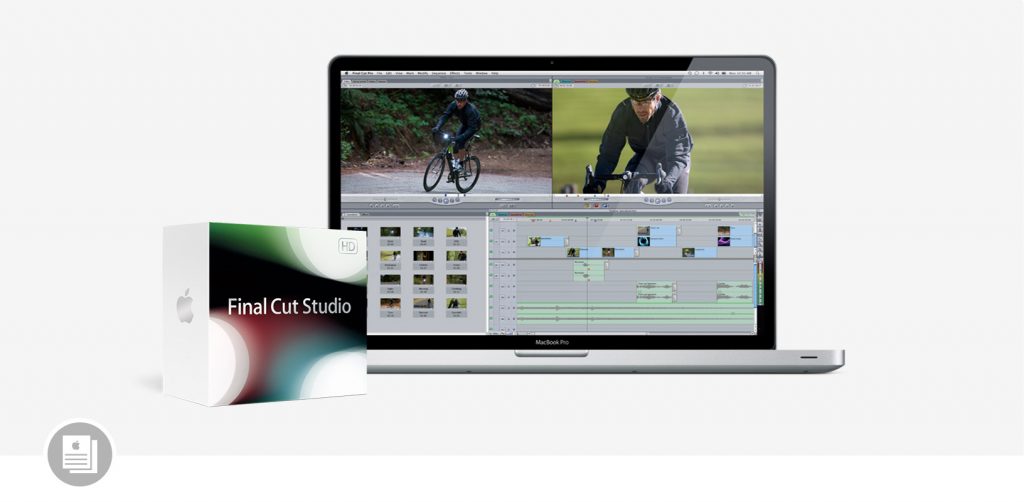
Since then, there have been 15 iterations of OSX, Steve Jobs sadly lost a battle with pancreatic cancer and Apple had a few false starts in their “Pro” lineup, launching Final Cut Pro X and dropping support for Final Cut Studio on the same day (which saw hundreds of thousands of filmmakers move to Adobe Premier overnight too when they saw how incomplete FCP X was and they saw that Final Cut Studio was no more). One of the biggest mistakes Apple made here was having no migration path available for existing Final Cut users. They upgraded/installed the new version and had no way of opening any of their old Final Cut projects. (Unless they installed Premier, which had the option to import from FCP).
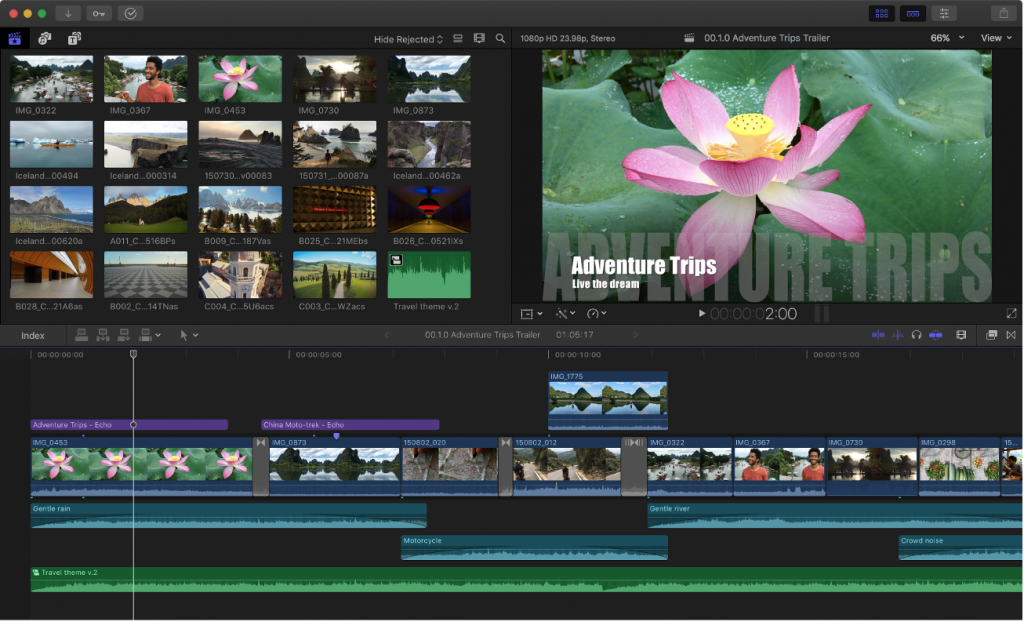
Apple went from strength to strength in the Pro market from a hardware perspective, with adverts extolling the virtues of the G4 and then G5 Mac Pro, so powerful it was classed as a munition and needed an export license from the US Department of Defence. They eventually moved from PowerPC processors to Intel processors and did that move so seamlessly that no-one really noticed the processor under the hood.
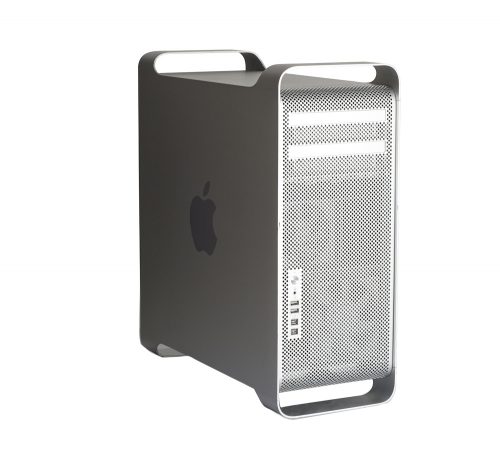
I was hooked! I bought G4 Mac Pros, G5 Mac Pros, iMacs .. I moved a number of my consultancy/business customers onto them because they were so easy to use and such low maintenance (this actually backfired as they were so easy to use and such low maintenance that we lost a fortune in revenue from callouts that didn’t happen to clean viruses from the machines. Windows users were so often in trouble with malware and viruses, but Mac users never seemed to experience the problem).
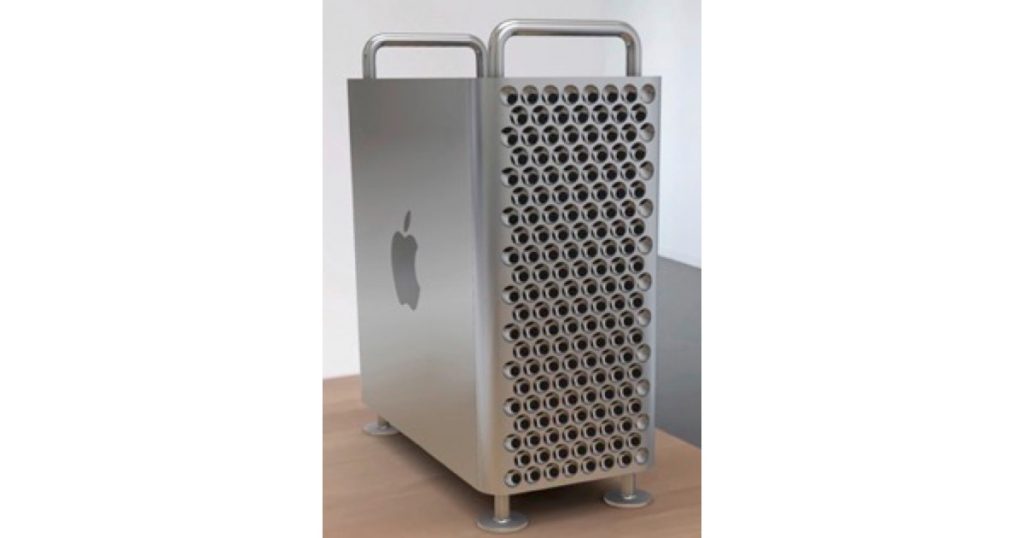
They also had more than a few problems with their “Pro” lineup of hardware though, the i9 MacBook Pro overheated and had to be “crippled” with a firmware update (which only worked in OSX so if you booted into Windows you would still thermal throttle). They launched the trash can Mac Pro (the iBin) in 2013. Barely upgradeable, they were out of date almost as soon as they’d launched. A small hardware refresh happened after a couple of years, but they were still underpowered and under spec’d – with no sign of anything new on the horizon. Apple finally realised this and launched the iMac Pro as a stop-gap (with an eye-watering $17,000 price tag for anything powerful enough), they then made a gushing apology at WWDC and promised a new Mac Pro that would be upgradeable, that would be powerful and that would, of course, be stylish. This was the “cheese grater”. They failed to mention that it would cost more than a Tesla and that it would still take them nearly 2 years to deliver, however.
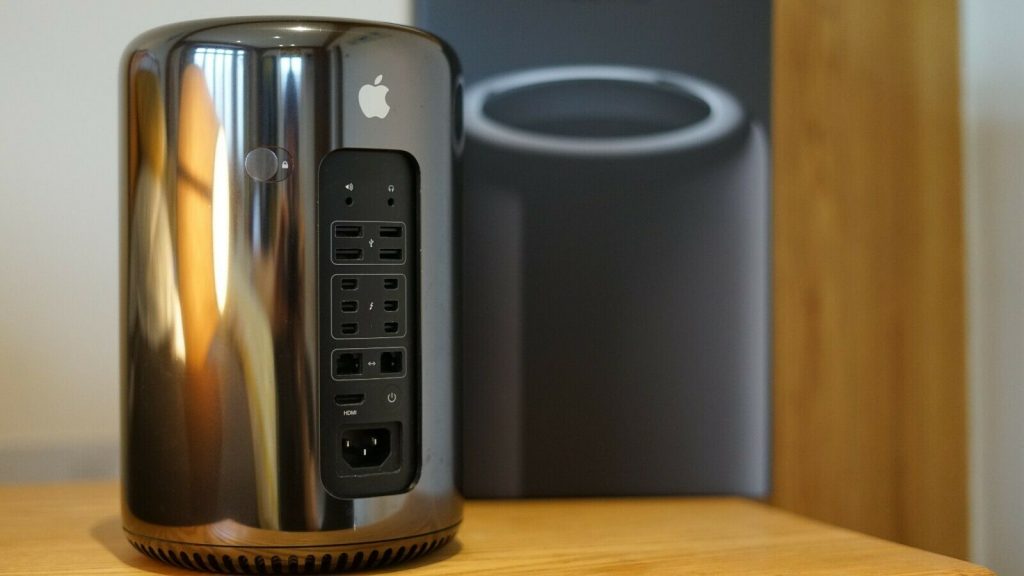
Over the period from 2000 to 2018 I have been loyally giving Apple my hard-earned cash, falling for every marketing line they offered up, whilst slowly wondering if they were ever going to actually innovate any more (beyond the amazing new colours for their new watch straps and phone cases). The iPhone is getting bigger and bigger, the price of their kit is getting more and more expensive, and I’ve now realised that if I want to buy a Mac Pro of any relatively decent specification, I need to re-mortgage the house to do it. At the same time, I look at the actual specifications of the hardware that Apple are putting into the new Mac Pro and the prices of the components. A CPU that can theoretically handle 2TB of RAM which costs $7,500 – although that 2TB is realistically only 1.5TB – and Intel actually sell an equivalent CPU that can address up to 1TB of physical RAM for $3,800).
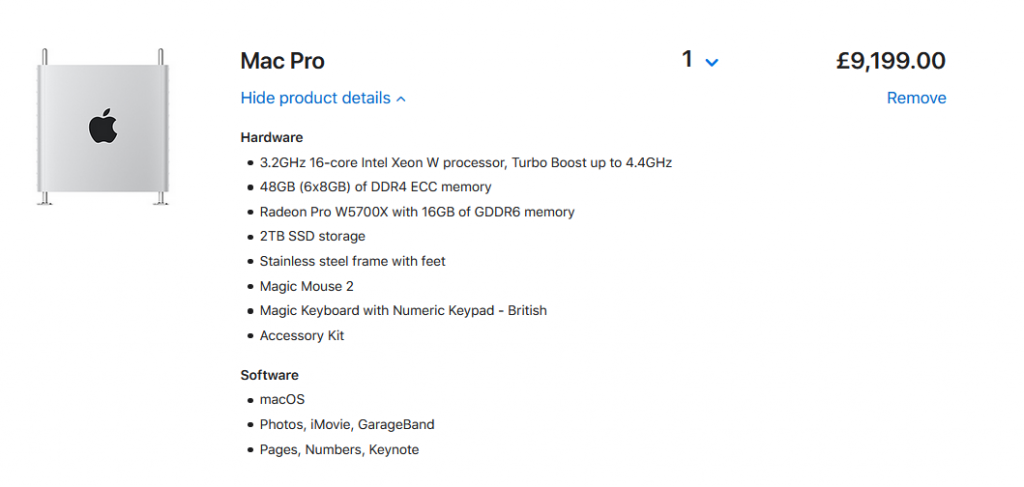
Custom NVMe2 SSD cards that cost 4x the price of a standard NVMe2 drive, and similar “price gouging” on RAM upgrades – and I finally woke up, Apple are milking their “sheep” fan base as hard as they can. I also started to evaluate what my work flows were and where the bottlenecks were in performance as well as what I could do to improve these either on Apple, or PC, and whether or not I could build a platform that was actually agnostic.
Disk performance test after disk performance test made me realise that whilst Thunderbolt 2 attached external storage was faster, it wasn’t scalable. £3,500 for a 24TB Pegasus2 RAID unit was pricey, but it boosted disk access times from 80MB/sec to 400MB/sec. This meant I could work on 4K video footage in Final Cut. At this stage, I’m still a heavy Final Cut Pro X user, but at the same time, I have started to explore alternatives. I have enrolled in film school with Raindance and they are pushing Adobe Premiere as the NLE of choice. At the same time, Davinci Resolve is starting to look like a serious contender. I have a debate with the lecturers at Raindance and convince them that so long as my work is delivered on time and to a standard, it shouldn’t actually matter which NLE I’m using. An NLE is an NLE. It shouldn’t matter whether I’m using iMovie, Final Cut, Adobe Premiere or Davinci Resolve – and in fact, being able to work in all of these editors should in fact be a bonus were I to try and get a job with a production house at the end of the course.
I decide that it’s time to seriously consider a switch, and spend far too long working out the ideal Intel-based i9 build, Z370 motherboard, RAM and more … and then AMD catches my eye, and Threadripper 2. These are pricey, $3,999 for a 32 core (64 thread) CPU, but boy oh boy is the whole Zen 2 architecture exciting! and then, AMD releases Ryzen 3000. Specifically the Ryzen 3950X with 16 cores (32 threads) and a price that’s shockingly affordable, it only addresses 128GB of RAM though (who am I kidding having been stuck with 16GB as the most my poor MacBook Pro could handle). I spend a few more weeks (months?) thinking about it and then finally decide to pull the trigger in March 2020.
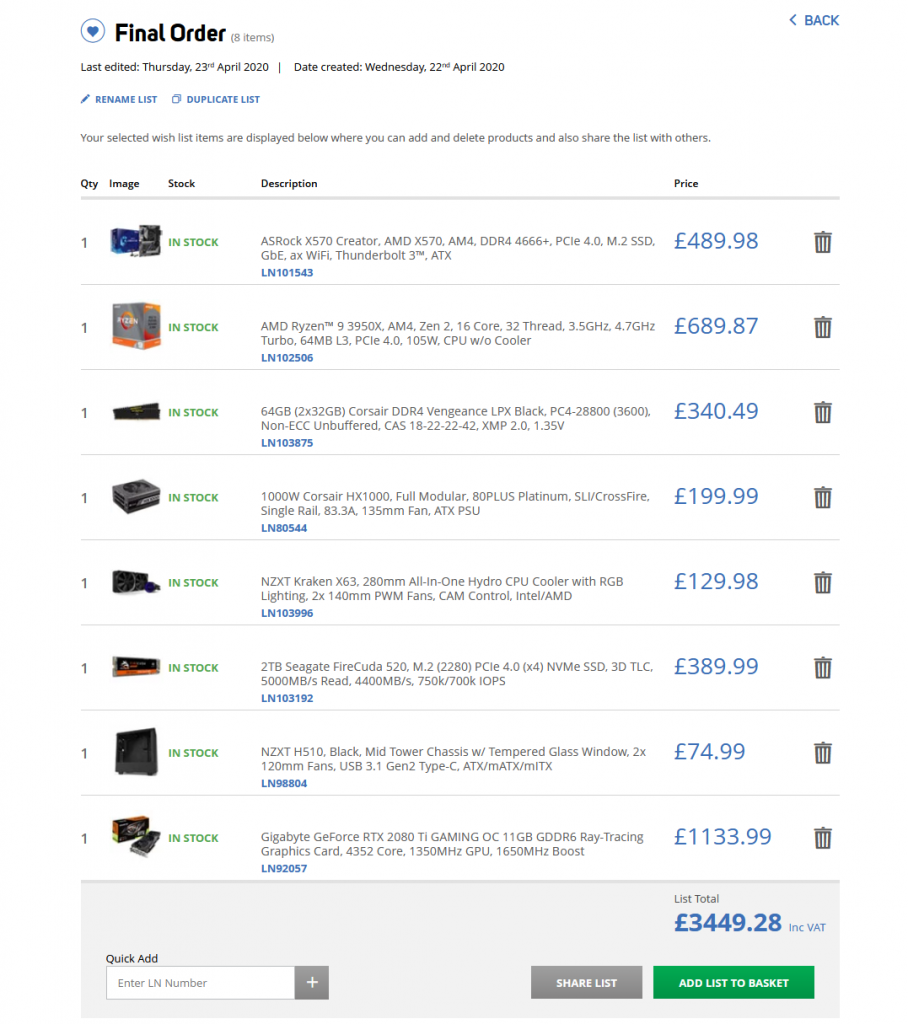
The machine should out perform almost anything else out there currently, especially with PCIe4.0 architecture, I spec a PCIe4.0 SSD which benchmarks at over 4000MB/second in read/write tests. I choose a heavy duty X570 motherboard with built in 10 Gig ethernet and 802.11ax (Wifi 6), Thunderbolt 3 and support for Zen 2 and Ryzen 9 (including the 3950x) processors.
The build takes me about 2 hours, I spent over an hour trying to work out the optimal route for the power cables and water cooling so they would look “pretty” through the tempered glass side, and of course the RGB. I confess I am quite pleased with the result.
The new machine benchmarks extremely well
| AMD Ryzen 9 Geekbench Test | Score | Apple Mac Pro 2013 | Score | Difference |
| Single-Core Score | 1234 | Single-Core Score | 835 | 1.5x |
| Multi Core Score | 13451 | Multi Core Score | 3271 | 4.11x |
| CUDA | 139046 | Metal | 22354 | 6.22x |
| OpenCL | 122296 | OpenCL | 21059 | 5.8x |
Cinebench R20 is equally as impressive
Ryzen scores 8949 whilst the old Mac Pro scored 1416
Ahh I hear you say, but that’s against a 7 year old Mac Pro. How does your new build compare to the current Mac Pro 2019? Well, I don’t have one to run the tests on myself – however a quick Google of benchmarks comes back with
| Mac Pro (Late 2019) | Scores | Ryzen is faster |
| Geekbench v5 Single-Core | 1030 | 1.2x |
| Geekbench v5 Multi-Core | 8042 | 1.67x |
| CineBench R20 – 16 core Mac Pro | 6859 | 1.3x |

Enough of the history, if you’re interested in the day to day operation and how well it fits into my workflow then read on – part two coming up next week as I make notes on how Windows 10 fits into my workflow and what (if anything) am I missing from the OSX days.


